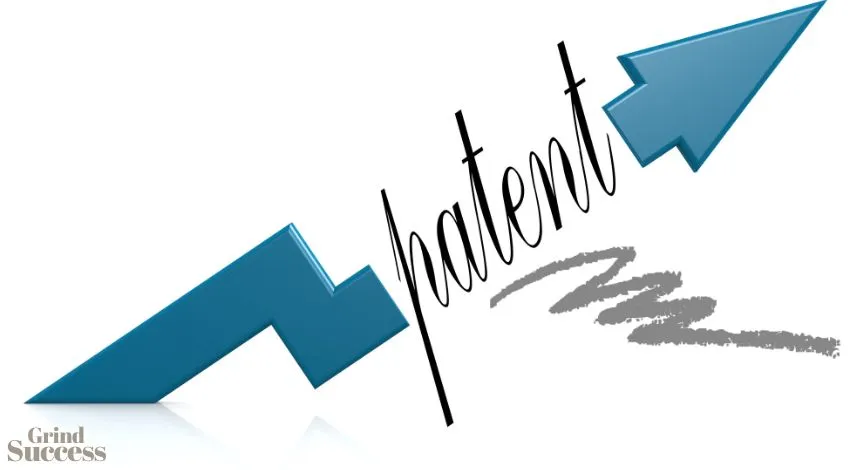From Idea to Action: Unleashing the Power of Patent Enforcement

For business proprietors, innovators, and creators, patent protection is pivotal in shielding your inventive ideas and creations.
These ideas are your currency, differentiating you in the competitive market. Yet, how can you ensure the safety of these invaluable assets?
This is where patent protection steps in; it serves as your guardian, your safeguard, guaranteeing the sanctity of your unique concepts.
In this article, we delve into the intricacies of patent protection, translating intricate concepts into accessible, actionable insights.
Let us unlock the true potential of patent protection, fortifying your business’s competitive advantage in the ever-evolving commercial arena.
The Significance of Patent Protection and its Influence on Business Prosperity
In its simplest terms, patent enforcement is the legal mechanism that grants patent holders exclusive rights to their inventions or ideas, guarding them against unauthorized use or replication.
This enforcement process maintains the exclusivity of these patented ideas, ensuring that they remain in the rightful ownership of the originators.
Being an enforceable right, a patent gives you the upper hand in maintaining a robust position in the market.
It allows you to capitalize on your novel ideas without the fear of competition breathing down your neck, providing you with a degree of market monopoly.
A classic example of effective patent enforcement is the case of pharmaceutical giant Pfizer with its blockbuster drug, Lipitor.
The patent protection on Lipitor allowed Pfizer to enjoy exclusivity in its production and sale, leading to phenomenal commercial success.
At the height of its patent, Lipitor generated annual sales of approximately $13 billion, demonstrating the enormous financial benefits patents can bestow on a business.
Another example is Microsoft, a leader in the tech industry. Microsoft’s robust patent portfolio and rigorous patent enforcement tactics have played a pivotal role in maintaining its industry dominance.
Their patented software and technologies have remained exclusive, enabling them to stay ahead in the fiercely competitive tech world.
These examples clarify that patent enforcement is a legal formality and a strategic tool for business success.
It is a potent instrument that ensures your unique offerings remain yours alone, bolstering your competitive position and propelling your business toward unrivaled success.
Types of Patent Infringement
Regarding patent enforcement, one of the most essential considerations is infringement. Infringement occurs when someone uses your patented product or process without a license.
This can take various forms, some of the most common forms being direct and indirect infringement.
Direct Infringement
Direct patent infringement occurs when entities engage in actions such as production, usage, sales, offering for sale, or importation of a patented innovation without the patent holder’s consent (or license).
It encompasses the unauthorized utilization or exploitation of patented technologies, products, or processes.
Illustrative examples of direct patent infringement include:
Indirect Infringement
Indirect patent infringement pertains to activities that indirectly stimulate or facilitate direct infringement conducted by third parties.
This classification involves two principal categories:
Effective Strategies for Ensuring Patent Protection
As a patent holder, your foremost measure should be establishing a vigilant system to monitor the market for potential infringement via patent enforcement services.
Regular assessments of competitors’ products, technologies, and operations will identify potential infringement early, allowing for timely intervention.
Once potential infringers are identified, determining the strategy for patent enforcement becomes the subsequent imperative. Several approaches are available, encompassing negotiation, litigation, and licensing.
Negotiation and Licensing
Licensing facilitates the granting of permission by patent holders for the legitimate utilization of patented technology in exchange for predetermined terms such as royalties or upfront payments.
This approach offers a mutually beneficial solution by generating revenue for patent holders while allowing others to employ the technology legally.
Negotiation Strategies to Foster Favorable Licensing Agreements:
The Potency of Cease and Desist Letters
A cease and desist letter serves as a formal communication from the patent holder to the alleged infringer, apprising them of the patent’s existence and demanding the discontinuation of infringing activities.
Key components of such letters include patent details, a comprehensive description of the infringement, substantiating evidence, a categorical demand for cessation, and a stipulated timeframe for response.
Crafting a Highly Effective Cease and Desist Letter
Navigating Legal Avenues for Patent Protection
Should all other approaches falter, patent holders can initiate legal action to curtail infringing behavior and seek reparations for incurred losses.
This course of action can involve filing a lawsuit within a federal court or pursuing the matter through the U.S. International Trade Commission (ITC).
The fundamental stages of this legal course encompass the following:
Pursuing legal action should invariably be regarded as a last recourse, given the potential for substantial expenses and temporal investments. It is paramount to confer with legal experts before embarking on any form of litigation.
The Dichotomy of Litigation: Pros and Cons
While litigation can effectively safeguard patents, it is imperative to consider the inherent advantages and disadvantages before initiating this course of action.
Advantages:
Cons:
Conclusion
In conclusion, the journey from idea to action finds its formidable ally in patent enforcement. For entrepreneurs, creators, and innovators, patent protection is the bedrock of safeguarding ingenuity and maintaining a competitive edge.
It is a guardian, ensuring the integrity of unique concepts and fending off unauthorized use.
From pharmaceutical giants like Pfizer to tech leaders like Microsoft, patent enforcement has exemplified its role as a strategic necessity, not just a legal formality.
Effective strategies, from negotiation to litigation, offer avenues for proactive defense. Cease and desist letters and legal actions, while last resort, solidify a commitment to the sanctity of intellectual property.
As the curtain draws on this exploration, remember that patent enforcement is not solely a legal mechanism; it’s a manifestation of your dedication to innovation.
It’s your compass through the complexities of protecting your ideas, ensuring they thrive, and contributing to a dynamic and thriving commercial landscape.




